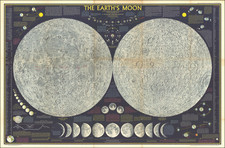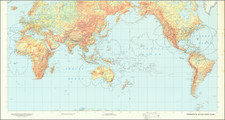This set of three Gemini Orbit Charts, designated GOC-4 and encompassing sheets 1 through 3 (of 3, i.e., complete) for orbits 1-66, is a technical representation from the Gemini IV mission in May 1965, produced by the USAF Aeronautical Chart and Information Center. At a scale of 1:60,000,000 at the equator, these charts provide detailed trajectories, tracking sites, and designated mission points, including primary and secondary landing zones, indicative of the navigational and operational approaches of the program.
During the 1960s, NASA's Gemini program was integral to advancing the United States' manned space efforts, leading to the Apollo moon missions. The Gemini IV mission is particularly notable for conducting the first American spacewalk. These charts reflect the practical aspects of space navigation and mission planning, capturing the essence of the era's technological ambitions.
The collaboration between military and aeronautical organizations highlights the period's intensive focus on space as a new frontier. The charts, with their notes on the preliminary positions of various tracking points, illustrate the iterative nature of space mission planning, subject to continuous refinement and adjustment.















![Apollo Earth Orbit Chart (AEO) Apollo Mission 8. Sheet 1 of 3, Contains Revolution 1. For December 1968 Launch Dates [with:] Sheet 2 of 3, Contains Revolution 2. For December 1968 Launch Dates [and: Sheet 3 of 3, Contains Revolution 3. For December 1968 Launch Dates]](https://storage.googleapis.com/raremaps/img/small/95707.jpg)
